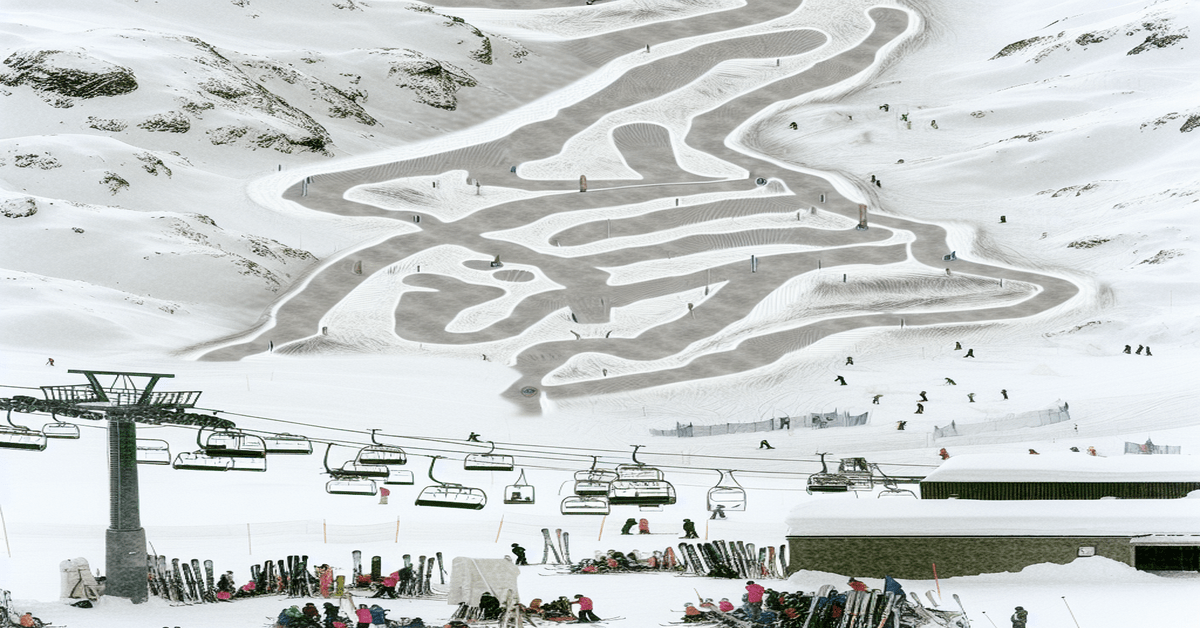Google Maps Removes Ski-Area Overlay Feature, Leaving Winter Sports Enthusiasts Disappointed
In a surprising move, Google has recently removed the ski-area overlay feature from its popular mapping service, Google Maps. This change has left many skiers and snowboarders frustrated, as they relied on this tool to plan their trips and navigate ski resorts with ease.
The ski-area overlay provided users with detailed maps of ski resorts, including information on trails, lifts, and other essential amenities. This feature was particularly useful for those visiting unfamiliar ski areas, allowing them to familiarize themselves with the layout and plan their routes accordingly.
Impact on the Winter Sports Community
The removal of the ski-area overlay has sparked a strong reaction from the winter sports community, with many expressing their disappointment and frustration on online forums such as First Tracks Online. Skiers and snowboarders who have come to depend on this feature are now left without a reliable, integrated solution for navigating ski resorts.
One user on the forum expressed their disappointment, stating, “This is a huge loss for skiers and snowboarders. The Google Maps ski-area overlay was my go-to tool for planning trips and exploring new resorts. It’s a shame to see it go.”
The sentiment is shared by many others in the community, who are now searching for alternative solutions to fill the void left by the removal of this feature.
The Importance of Detailed Ski Resort Maps
For winter sports enthusiasts, having access to detailed ski resort maps is crucial for a variety of reasons. These maps help users:
1. **Plan their trips**: By providing a comprehensive overview of the ski area, including the location of trails, lifts, and lodges, users can effectively plan their visits and make the most of their time on the slopes.
2. **Navigate the resort**: Detailed maps enable skiers and snowboarders to orient themselves within the resort, reducing the likelihood of getting lost or ending up on trails that are beyond their skill level.
3. **Discover new areas**: Ski resort maps can help users identify new trails and areas to explore, enhancing their overall experience and encouraging them to visit the resort again in the future.
The removal of the Google Maps ski-area overlay has left a significant gap in the tools available to winter sports enthusiasts, making it more challenging for them to access the information they need to plan and enjoy their trips.
Alternative Mapping Solutions
In the wake of this change, many users are turning to alternative mapping services and apps that still offer detailed ski resort maps. Some popular options include:
1. **Resort-specific apps**: Many ski resorts have their own dedicated apps that provide users with detailed trail maps, lift status updates, and other relevant information. These apps can be a great alternative to the Google Maps overlay, though they may require users to download multiple apps if they plan to visit several different resorts.
2. **Specialized ski mapping services**: There are several websites and apps that focus specifically on providing detailed ski resort maps, such as [OpenSnow](https://opensnow.com/) and [Fatmap](https://fatmap.com/). These services often offer additional features, such as 3D mapping and real-time updates on weather and snow conditions.
3. **Printed maps**: While less convenient than digital solutions, many ski resorts still provide printed trail maps that users can pick up upon arrival. These maps can be a reliable backup option for those who prefer a physical copy or may not have access to a smartphone or internet connection while on the slopes.
While these alternatives can help fill the void left by the removal of the Google Maps ski-area overlay, many users are still hoping that Google will reconsider its decision and restore this valuable feature.
The Future of Ski Resort Mapping
The removal of the ski-area overlay from Google Maps highlights the need for continued innovation and development in the realm of ski resort mapping. As technology advances and user preferences evolve, it is essential for mapping services and ski resorts alike to adapt and provide solutions that meet the needs of winter sports enthusiasts.
Some potential developments that could shape the future of ski resort mapping include:
1. **Enhanced resort-specific apps**: Ski resorts may invest in developing more comprehensive and user-friendly apps that integrate features such as real-time lift status updates, trail difficulty ratings, and personalized recommendations based on user preferences and skill levels.
2. **Augmented reality mapping**: The integration of augmented reality technology could allow skiers and snowboarders to access detailed trail information and navigate resorts in real-time, using their smartphones or smartwatches as a virtual guide.
3. **Crowdsourced data**: Mapping services could leverage user-generated data to provide up-to-date information on trail conditions, crowd levels, and other relevant factors, creating a more dynamic and accurate mapping experience for winter sports enthusiasts.
As the winter sports industry continues to evolve, it is crucial for mapping services and ski resorts to collaborate and innovate to provide the best possible experience for skiers and snowboarders.
Conclusion
The removal of the ski-area overlay from Google Maps has left many winter sports enthusiasts disappointed and searching for alternative solutions. This change underscores the importance of detailed ski resort maps for planning trips, navigating resorts, and discovering new areas to explore.
While there are several alternative mapping services and apps available, the winter sports community is hoping that Google will reconsider its decision and restore this valuable feature. In the meantime, skiers and snowboarders will need to adapt and find new ways to access the information they need to make the most of their time on the slopes.
As the industry continues to evolve, it is essential for mapping services and ski resorts to collaborate and innovate to provide the best possible experience for winter sports enthusiasts. By embracing new technologies and listening to the needs of their users, these organizations can help shape the future of ski resort mapping and ensure that skiers and snowboarders have access to the tools they need to fully enjoy their time on the mountain.
#GoogleMaps #SkiResortMapping #WinterSports #SkiAreaOverlay #SkiIndustry
-> Original article and inspiration provided by FirstTracks Online Skiing and Snowboarding Forums
-> Connect with one of our AI Strategists today at ReviewAgent.ai


